Creating a New User in the Office 365 Portal
To monitor Microsoft Office 365 and its cloud-based service offerings such as SharePoint Online, Exchange Online, OneDrive for Business, Microsoft Teams, Microsoft Yammer etc., the eG agent has to be configured with the credentials of a user who has been assigned specific privileges. These privileges vary with the service being monitored - i.e., eG monitoring model in use.
The table below describes these privileges:
|
Monitoring model |
Permissions |
|
Microsoft Office 365 |
A user who is vested with the View-Only Audit Logs permission |
|
Microsoft Exchange Online |
A user who is vested with the View-Only Audit Logs, View-Only Recipients, Mail Recipients, and Mailbox Import Export permissions. |
|
Microsoft SharePoint Online and Microsoft OneDrive for Business |
A user who has been assigned the Service support admin and SharePoint admin roles and is vested with the View-Only Audit Logs permission |
|
Microsoft Teams |
A user who has been assigned the Service support admin role and is vested with the View-Only Audit Logs and Team Administrator permissions |
|
Microsoft Yammer |
A user who has been assigned the Service support admin role and is vested with the user_impersonation permission |
While you can use the credentials of any existing O365 user with the aforesaid privileges, it is recommended that you create a special user for monitoring purposes using the Office 365 portal and pass the credentials of that user to the eG agent. To create a new user using the Office 365 portal and assign the required privileges to that user, follow the steps detailed below:
- Using a browser, connect to the Office 365 portal. The default URL of the portal is: https://portal.office.com
- Login to the portal as a user with administrator privileges.
-
Figure 427 will then appear.
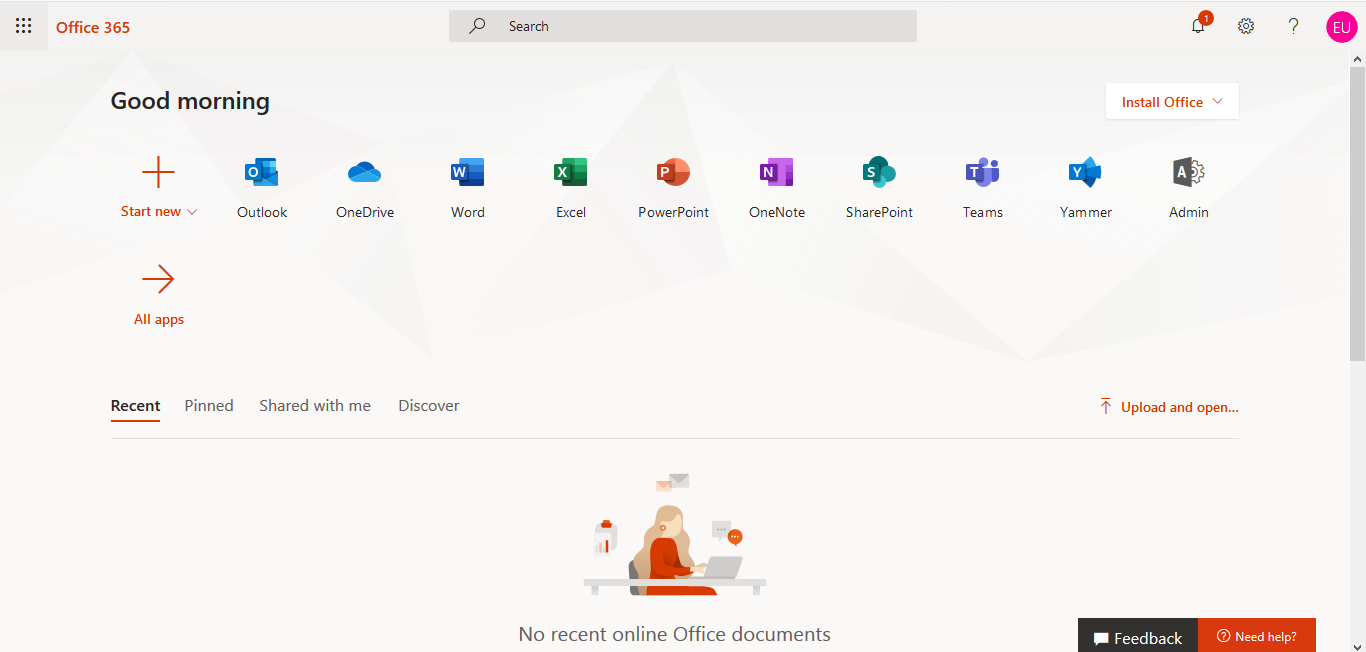
-
Click on Admin under Apps (in Figure 427). The Microsoft Office 365 Admin Center will then appear (see Figure 428).
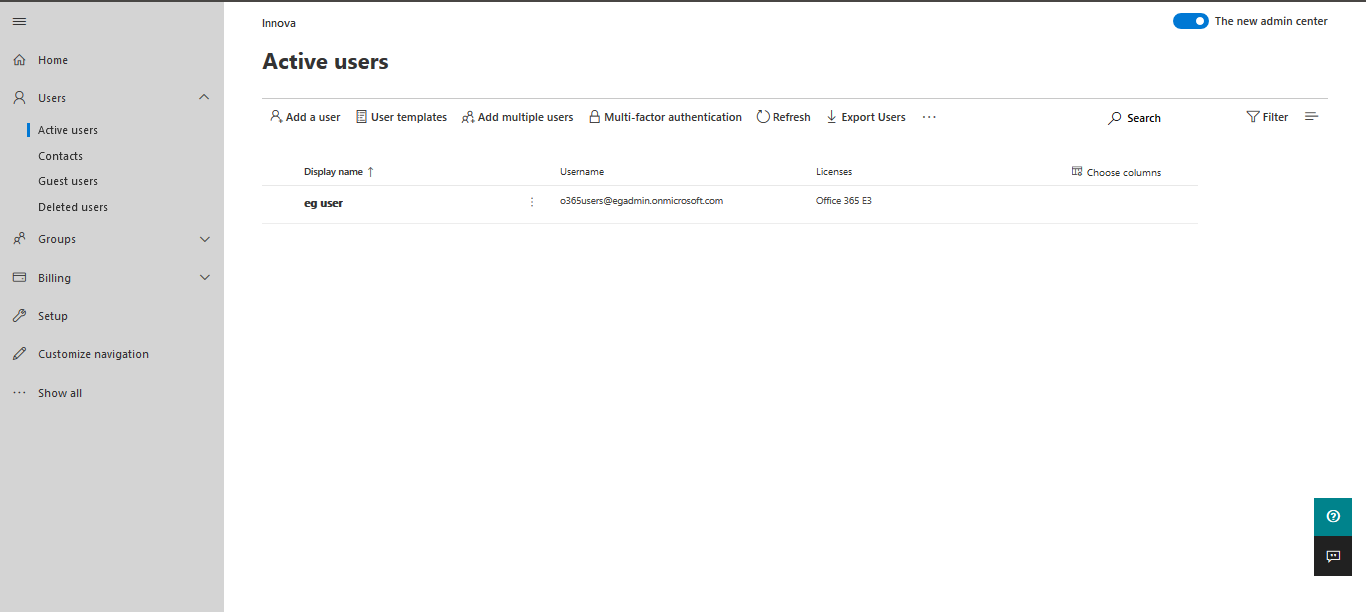
- To create a new user, click on the Add a user link under the Active users section in Figure 428.
-
Figure 429 will then appear.
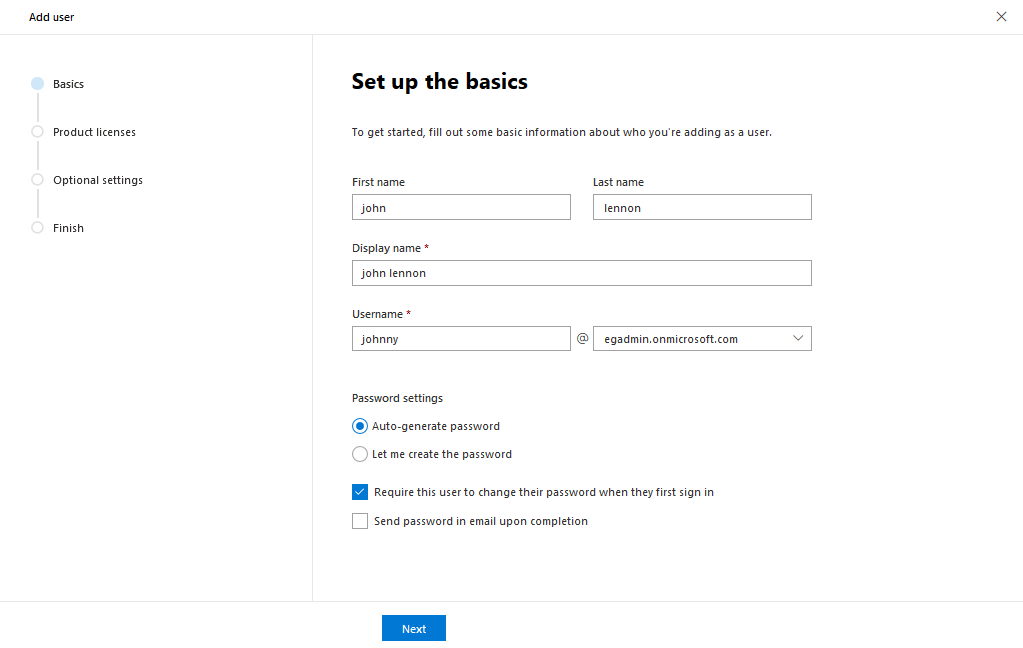
-
Provide the First name, Last name, and Display name of the new user. Then, provide a Username, which will be automatically suffixed with the domain name of the Domain you have logged into. Click the Next button to select the geographic location of the new user.
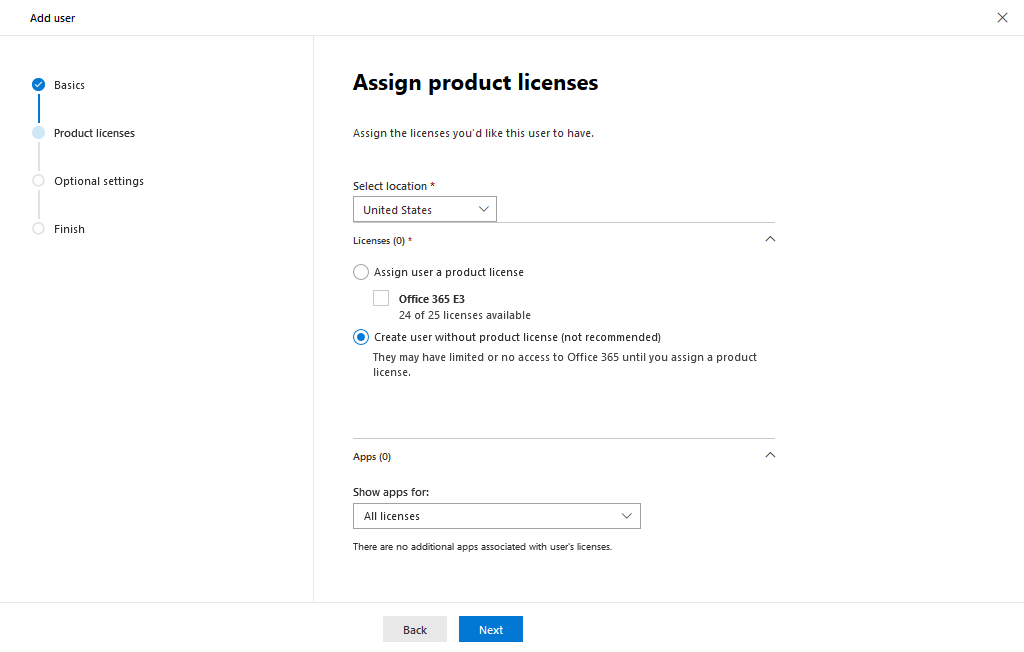
Figure 430 : Choosing the geographic location of the new user
- Then, select the geographic Location of the new user. Turn On the Create user without product license flag in Figure 430.
-
Clicking the Next button in Figure 430 will reveal Figure 431. Here, select the Admin center access option, and choose the Service support admin and SharePoint admin permissions as indicated by Figure 431.

-
Click the Next button in Figure 431 to review your selection which appears in Figure 432.
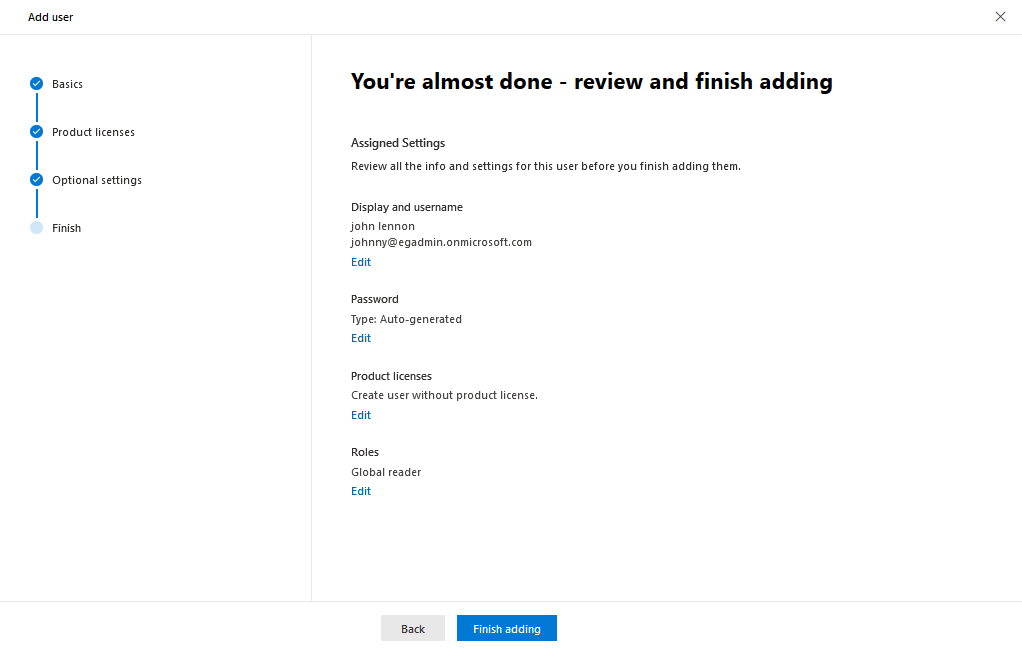
-
Finally, click the Finish adding button in Figure 432 to add the new user. Figure 433 will then appear providing a quick summary of details of the user you just created. Office 365 also automatically generates and assigns a password to the new user. Make a note of the Username and Password displayed in Figure 433, as this is what you need to configure against the OFFICE 365 USER and OFFICE 365 PASSWORD parameters of the eG tests.
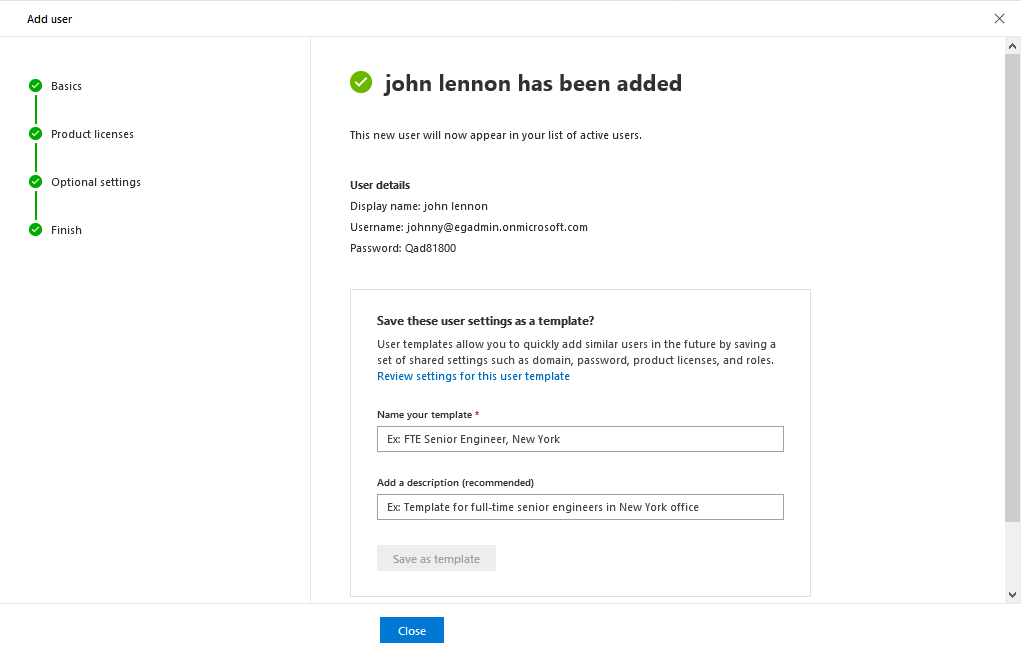
Figure 433 : Message confirming the successful addition of a user
Note:
Check if the Password displayed in Figure 433 contains double quotes. If it does, then remember to change the password before attempting to pass these credentials to eG tests. If this is not done, then some eG tests may fail to report metrics.
-
Next, proceed to assign the View-Only Audit Logs permission to the new user. For that, first click on the Admin Center tool
 in the tool bar depicted by Figure 434. From the menu that pops up, click on Exchange.
in the tool bar depicted by Figure 434. From the menu that pops up, click on Exchange. 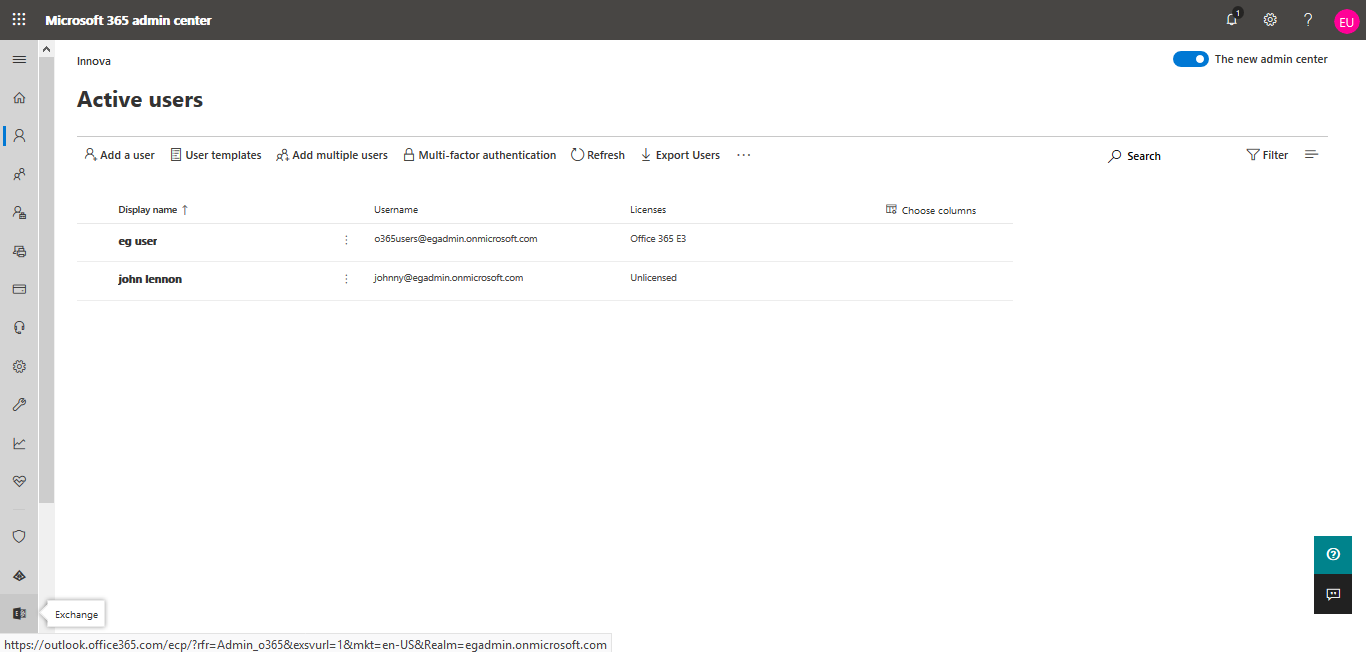
-
Figure 435 will then appear.
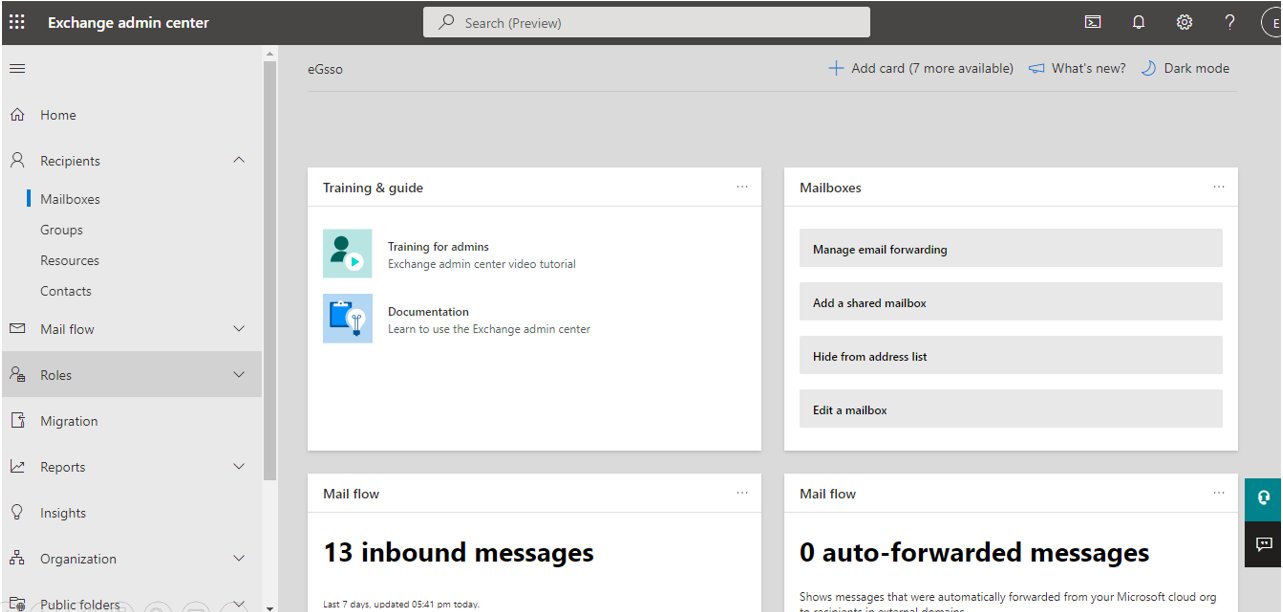
-
From the list of options in the left panel of Figure 435, select Roles. Figure 436 will then appear listing the Admin roles that pre-exist.
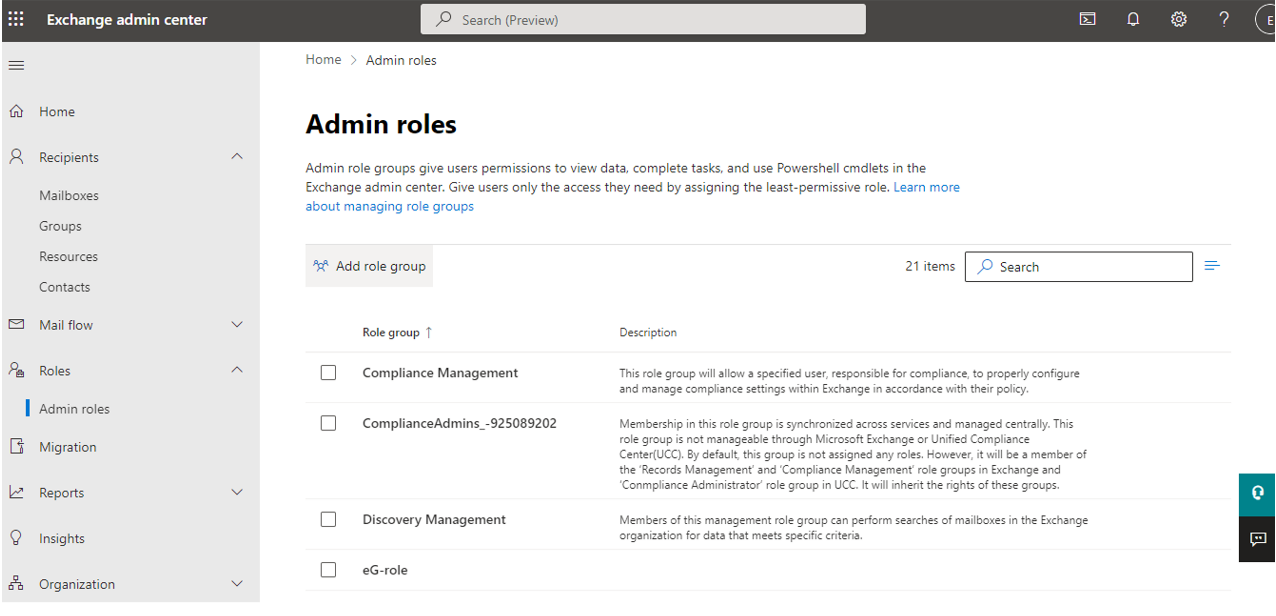
Figure 436 : Clicking on the Roles option to view the Admin roles
-
Let us now proceed to create a role group that includes the View-Only Audit Logs permission. For that, click on the Add role group button in Figure 436. Figure 437 will then appear.
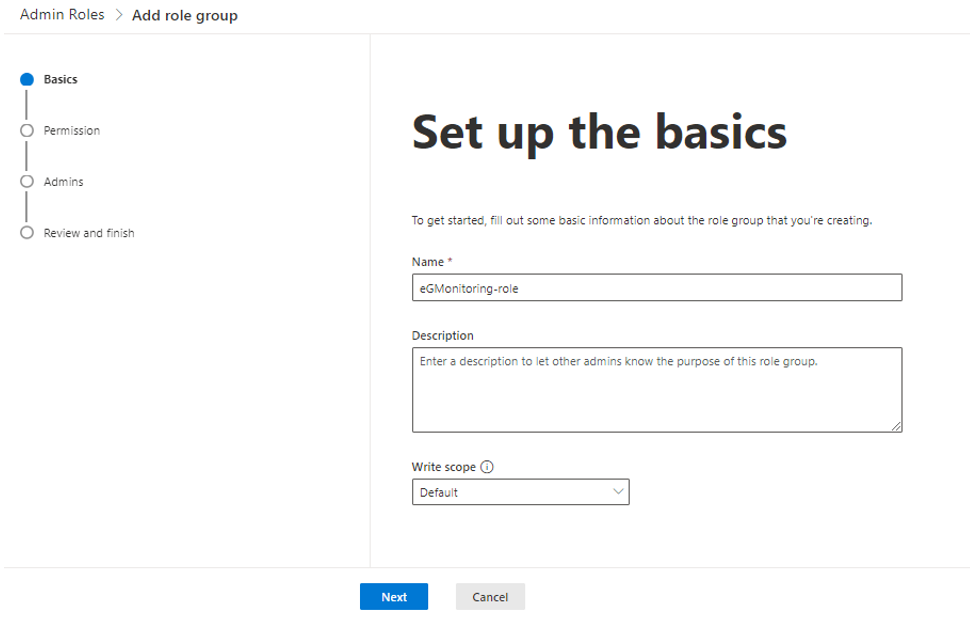
-
Provide a unique Name and Description for the new role group (see Figure 437). Then, click on the Next button in Figure 437. Figure 438 will then appear listing the permissions that you want to add to the new role group. From this list, select the View-Only Audit Logs permission and click the Nextbutton to add the permission.
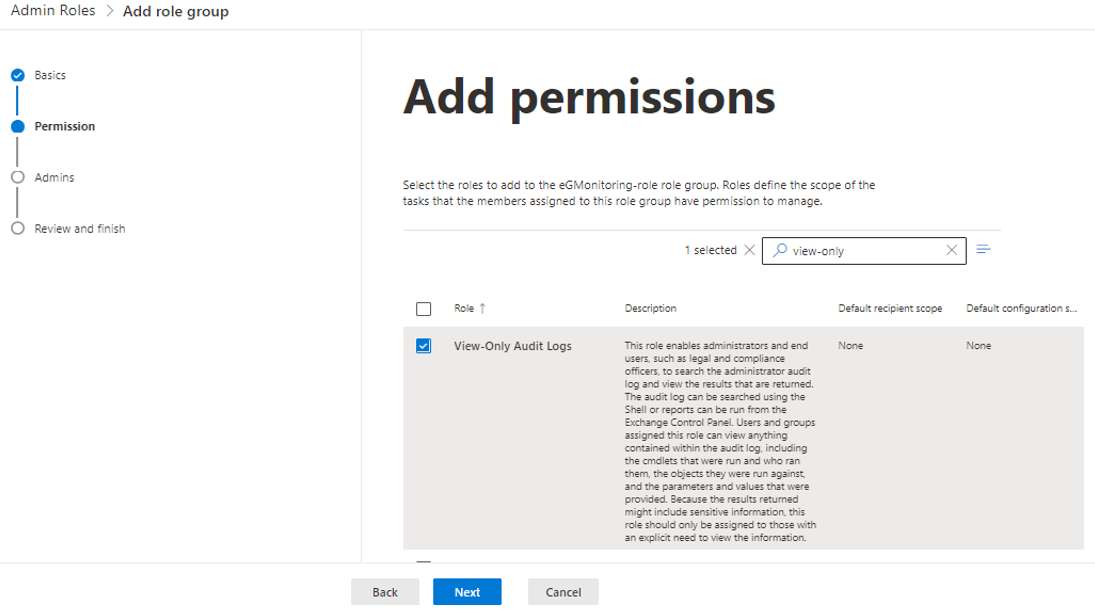
Figure 438 : Adding the View-Only Audit Logs permission to the new role
-
Figure 439 will then appear. Next, proceed to assign the new role group (that includes the View-Only Audit Logs permission) to the user you created previously for monitoring purposes. For that, enter the display name of that user in the text box you see in Figure 439. Then, click the Next button to proceed.
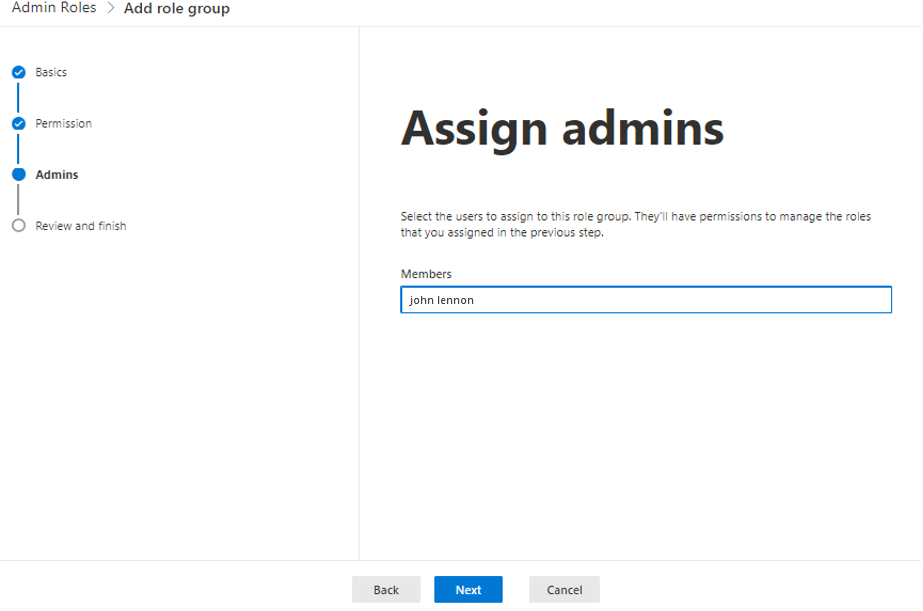
Figure 439 : Specifying the name of the user to whom the new role group has to be assigned
-
Figure 440 will then appear. Quickly review the specifications of the role group using Figure 440, and finally click the Add role group button therein to save the specifications.
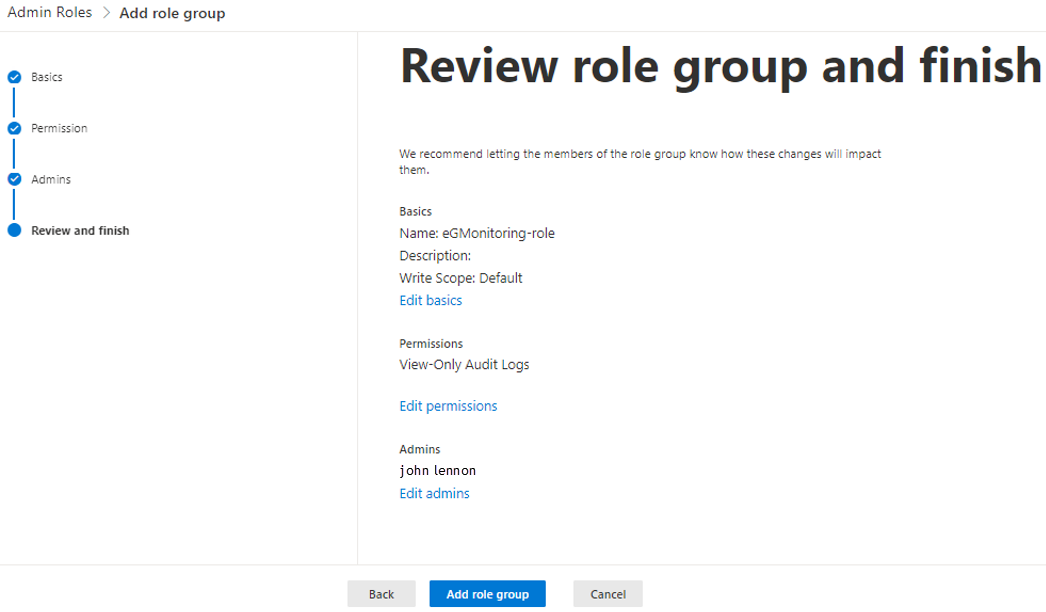
Assign other permissions to the newly added user by repeating steps 12 - 18 above.
